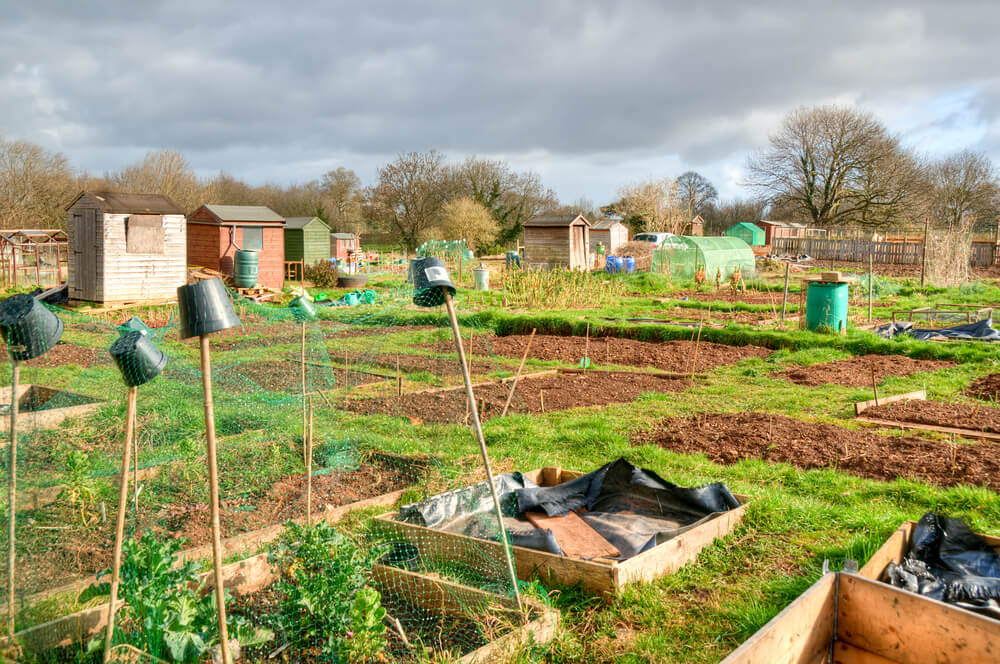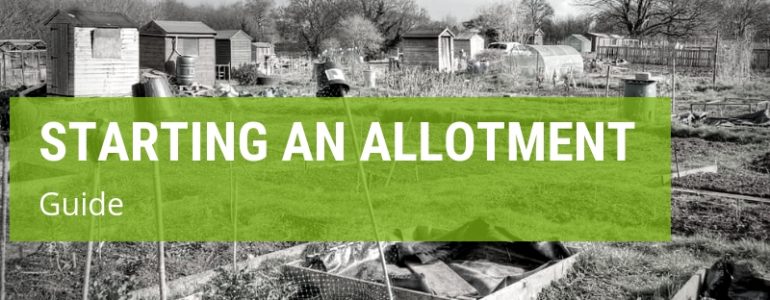Having your own allotment can be a thrilling and rewarding experience. It is a wonderful way to enjoy the nature and grow great-tasting, nutritious veggies, herbs, and fruits for foods. But to most novice gardeners, it might seem like a challenging task, especially in the beginning.
So if you are planning to start your garden but don’t know where to start, here are an overall guide about how to start an allotment from scratch. With hard work and determination, you can plant your veggies and seeds within a few weeks as this clip:
What you’ll need
Before starting, it is necessary to prepare the right tools to make the task as easier and more relaxing. Basically, you need a shovel, gardening trowel, gloves, garden fork, buckets or baskets, and a watering container. For a large allotment, you might also need a wheelbarrow, loppers, hoes and rakes.
1. Clear the allotment
The first thing you need to do after getting an allotment is to clear it of debris, uneven soil, and overgrown weeds. If there is any garbage in the area, remove it first with your hand. Keep in mind to wear thick gloves to prevent germ-filled and rusty materials from hurting you.
Next, use a chainsaw or other alternative ways to cut down any trees and bushes from the lot and remove their roots with the hoe. This will prevent these weeds from growing back in the future. Once the whole area has been cleared of these things, you need to smooth the soil with a hoe or rake.
2. Build a fence around your lot
Depending on the budget, you might install a fence on your own or hire a professional service. This layer of protection will minimise vandalism from other people or animals in the neighbourhood. Then think up a name for your allotment and create a sign on the fence to inform other people.
While the fence will not completely prevent all cases of vandalism and/or keep out all animals, you should not set up barbed wires or a security system. Keep in mind that it is still a part of the community, and it is still to keep it friendly and open to other neighbours.
3. Test the drainage of the soil
To test the drainage, you first need to dig a small hole on the ground and fill it with water. Allow all water to drain, then fill the hole again.
If the drainage time is less than 15 minutes, the soil in your allotment might have good drainage. If it takes more than 1 hour for water to drain, then you might have a lot with slow-draining soil. Basically, most veggies, flowers, and trees require soil with high drainage.
Depending on your types of plant, there are some techniques to adjust this level such as adding some well-rotted manure and compost. For serious drainage problems, it is a good idea to set up an underground piping system to help get rid of excess water.
4. Check the quality of the soil

In addition to drainage, the pH level is another important feature that you need to check in your soil. It is easy to purchase a pH testing kit at most gardening supply stores in the local.
First, you need to take a few soil samples from different areas throughout the allotment, then look at the strips to read the exact pH level. Most plants grow well in a pH level from 6.5 to 6.8. However, some other types can do best in acidic soil or lower level.
Thus, make sure to do research and plan carefully when choosing veggies or fruits to grow in your allotment based on the soil’s quality. In general, you can improve the nutrient-deficient soil by adding well-rotted manure and compost.
5. Set up an irrigation system
If you have a generous budget, setting up an irrigation system might bright a lot of benefits because watering is one of the most important tasks that you need to perform on a daily basis on your allotment.
To save your time, an automatic system can be a good investment. Nevertheless, keep in mind to wire your site for electricity and install a plug to function a controller. For a more affordable option, you just need to set up a water faucet or provide lots of watering cans.
6. Plant the herbs, flowers and veggies of your choice
Once everything has done, it’s time to start plating on your allotment. There is a variety of options available to choose from. However, make sure to consider all essential factors when selecting, such as soil quality, budget, climate, total area, and your experience.
Some good veggies to start with a new allotment include radishes, summer squash, tomatoes, green beans, snap peas, or lettuce. These plants are simple to grow and care without too much time and effort. If you want to plant herbs, consider chives, basil, parsley, lavender, rosemary, or thyme.
Also, it is a good idea to add some types of flowers such as clover, phacelia, nasturtium, daisies, chamomile, and marigold. They do not only add a touch of beauty in your allotment but also attract some good bugs and prevent the bad ones.








Our council will not let you build a fence around your own allotment. However it’s not really required as the site as secure fencing around it.